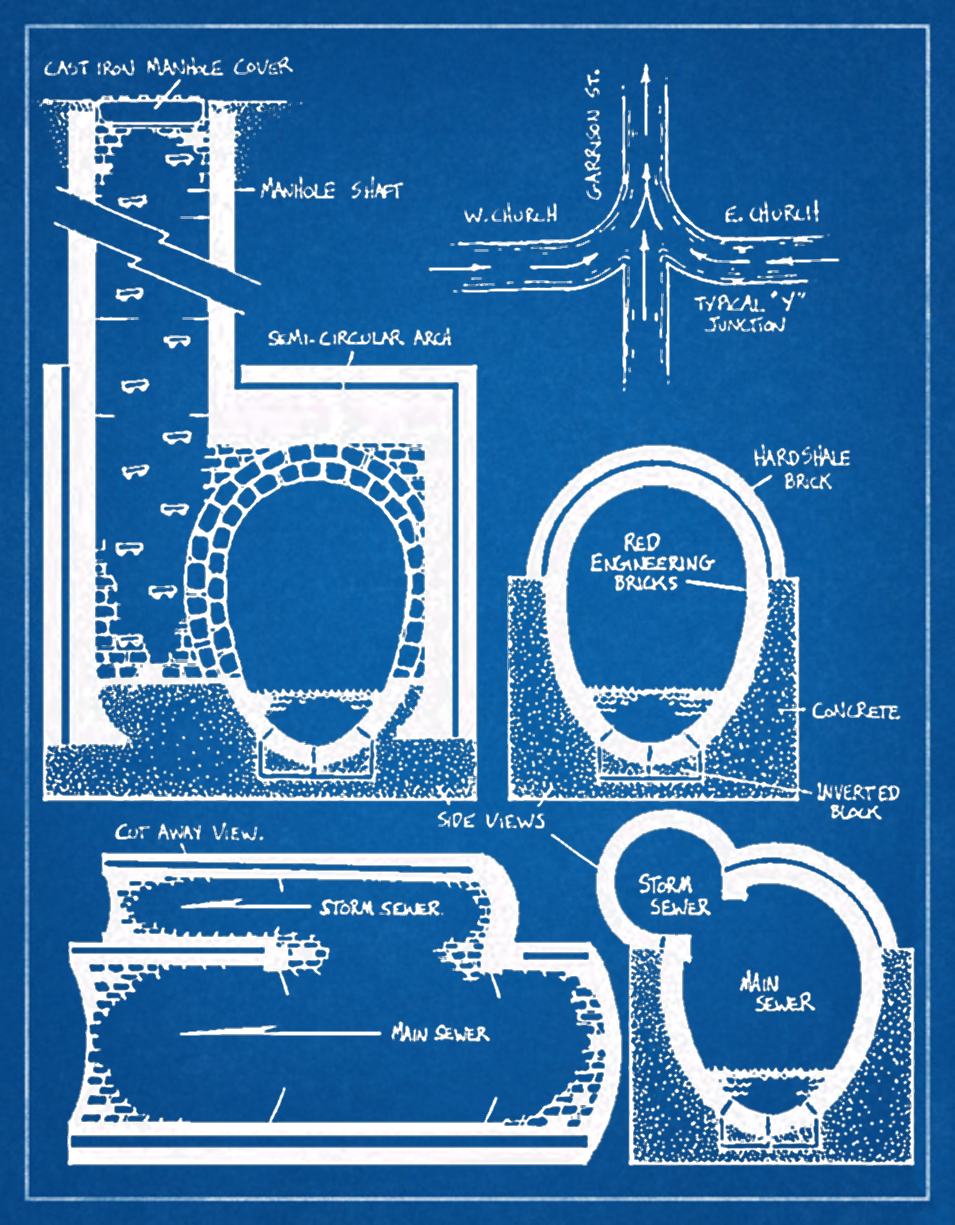New Jerusalem possesses separate, though not discrete, sewer and storm drain systems. Sewage is handled through the larger of the two systems and routes the city's effluents downstream and out of town before discharging them, untreated, into the Missituk. The storm drains handle runoff from rain and melting snow discharging at several points along the river within the city limits. The two systems are connected, in most places running parallel to each other. The drainage system is installed at a slightly higher level than the main sewer.
If rainfall is particularly heavy, more than the drains can handle, excess water spills off into the sewers and is carried out of town. But if the runoff is too high it fills the main sewer above the level of the storm drains, eventually mixing raw sewage in with the storm water. This foul mixture flows directly into the Missituk through the large storm drains. General practice in these times calls for this dilute sewage to never exceed a concentration of one part sewage to six parts water. New Jerusalem's efficient system boasts water never more polluted than one part sewage to eight parts water.
During dry weather the drainage System is fairly free of water but New Jerusalem's main sewers flow around the clock, with highest volumes recorded during the morning and early evening hours.
Manholes
Manholes give direct access to the city's sewers and are found all around the city, usually located no more than a hundred yards apart. The heavy covers are easily removed, revealing a vertical shaft leading down to the sewer. Sturdy iron rungs set in the wall facilitate the climb. At the bottom of the shaft is a small chamber with the sewer running through the center. There are stone benches here usually well above the water line, dry and free of debris. There is a small chance of finding pairs of rubber boots or hand tools (rakes, shovels, hoes, etc.).
The Sewers
Following the sewer lines any distance means wading through raw sewage. Before long, however, an opening between the sewers and parallel storm drains can be found, allowing travelers to transfer over to this more appealing route.
The Storm Drains
The storm drains may be directly entered only through of one of the main discharge outlets located along the banks of the Missituk. These are large, brick and concrete structures that outlet directly beneath New Jerusalem's three bridges. The circular openings are over five feet in diameter and closed off by barred iron gates secured with padlocks. Hacksaws, crowbars, or a locksmith are necessary to get past these gates although, oddly enough, the bars are spaced far enough apart that children, cats, dogs, or other animals can squeeze through. Once inside, a small chamber is found. During dry weather these drains are nearly empty, never carrying more than a trickle of water down the center. But a good steady rain quickly tums this trickle into a considerable flow that is difficult to walk against. A sudden cloudburst produces a raging torrent of water that half-fills the pipe and poses a serious threat to anyone inside. A heavy water flow can sweep a person off their feet and carry them down the pipe to be either trapped against the iron grate or, if it has been left open, spilled out into the swollen Missituk. Spring is the most dangerous time; melting snows and sudden thunderstorms can quickly overload the systems.
The Sewer Layout and Description
The drain and sewer systems parallel the streets of New Jerusalem forming a grid almost identical to surface streets. Systems north and south of the river are actually separate, although both are infested by the vermin. The largest drains, almost five feet high, run north and south along the major streets of West, Garrison, and Peabody. Branch connections from east-west streets occur at all intersections, joining the main drain in three headed, Y-shaped joints. At the joint these branches are the same size as the main drains but quickly narrow to a diameter of about three-and-a-half feet as they tum in the direction of their respective cross streets. Numerous smaller branches feed into these drains. They are too small for normal humans, but not cats and small dogs.
On both sides of the river the storm drains empty out beneath the bridges, plus a couple of smaller outlets near East Street.
Both sewers and storms drains are roughly the shape of an inverted egg, constructed of brick and concrete originally supplied by Dunham's Brickyard of New Jerusalem, closed now for almost a century. In the sewer lines raw sewage pours down the center of the tunnel in a continual stream, nearly a foot deep in the off-hours and reaching a height of two and a half feet during the peak hours of 6 a.m. to 10 a.m., and 4 p.m. to 9 p.m. Conditions in the storm drains reflect what the weather is outside, and sudden heavy thunderstorms are not uncommon in this part of the country.




Comments